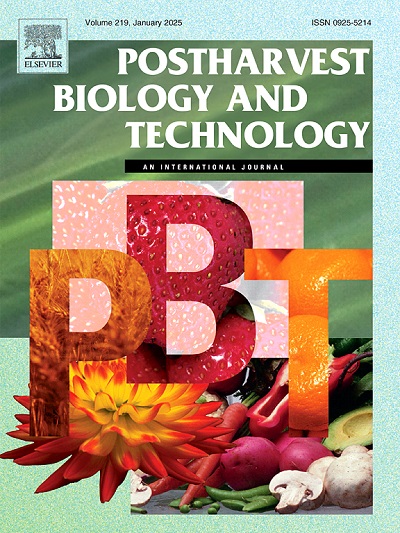SlNAC1 mediates MeSA application-promoted cold resistance by improving transcription of SlNRX2 in tomato fruit
IF 6.4
1区 农林科学
Q1 AGRONOMY
引用次数: 0
Abstract
Refrigeration process is often regarded as a traditional practice utilized to conserve nutritive value in postharvest horticultural products. As a result of susceptibility to low temperature environment, tomato fruit exhibit the development of chilling injury (CI) during refrigerated preservation, ultimately constraining marketability. Methyl salicylate (MeSA) application attenuated the CI in tomatoes. The MeSA-dipped fruit possessed the compromised reactive oxygen species (ROS) generation. MeSA application was conducive to improve the transcription level of SlNAC1. The SlNAC1-OE fruit displayed the increase in cold resistance, accompanied by the diminished amount of ROS. In contrast, the lower cold resistance and larger amount of ROS were observed in the SlNAC1-silenced fruit. MeSA application conferred the boosted transcription level of nucleoredoxin 2 (SlNRX2). Moreover, the transcription abundances of SlNRX2 increased by overexpression of SlNAC1, but decreased by RNAi of SlNAC1. It was substantiated that SlNAC1 transcriptionally promoted the SlNRX2 expression by targeting the NAC binding motif in its promoter region afterwards. Collectively, SlNAC1 was involved in the MeSA application-weakened sensitivity to low temperature stress by transactivating SlNRX2 in tomato fruit.
求助全文
约1分钟内获得全文
求助全文
来源期刊

Postharvest Biology and Technology
农林科学-农艺学
CiteScore
12.00
自引率
11.40%
发文量
309
审稿时长
38 days
期刊介绍:
The journal is devoted exclusively to the publication of original papers, review articles and frontiers articles on biological and technological postharvest research. This includes the areas of postharvest storage, treatments and underpinning mechanisms, quality evaluation, packaging, handling and distribution of fresh horticultural crops including fruit, vegetables, flowers and nuts, but excluding grains, seeds and forages.
Papers reporting novel insights from fundamental and interdisciplinary research will be particularly encouraged. These disciplines include systems biology, bioinformatics, entomology, plant physiology, plant pathology, (bio)chemistry, engineering, modelling, and technologies for nondestructive testing.
Manuscripts on fresh food crops that will be further processed after postharvest storage, or on food processes beyond refrigeration, packaging and minimal processing will not be considered.
 求助内容:
求助内容: 应助结果提醒方式:
应助结果提醒方式:


